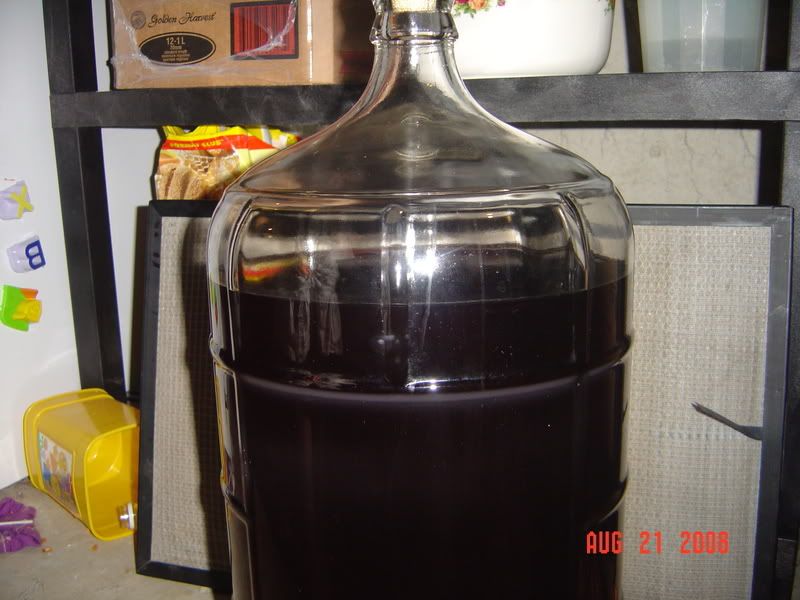jspence1
Well-Known Member
I transfered my wine into the secondary last night and am concerned that I have too much head space. If so what would I do at this point?
Thanks for the help.
John

Thanks for the help.
John






Ok here where I'm at with this. it is a 23L (6G) wine kit. I've done the primary fermentation the instructions said the sg would be 1.010 i measured 1.000. It appears to be less than 23L (23L carboy) now I did lose about 1L moving from the primary bucket. The instructions say not to top off with water that being said it looks a lot darker than I was expecting can I top it up with water?. I still have a 1L flavor pack to add in 10 days.
I have a 19L carboy empty that I could use for the wine if that would be better. I'm a complete noob here so any advice would be great.
Its almost funny that I searched like mad for a 6G carboy and now its too big lmao.
John
It doesn't say in the instructions to top up at anytime. Without the top up should I transfer it to the 5G carboy or just go ahead and top it up. I'm supposed to de-gas it in another 7 days.
John
Well I found some reading that said to top it up now, so I did on both. The Merlot has been sitting for 3 weeks short and the Barolo has been sitting 2 weeks short so I hope they will be okay.
I have been trying to follow some steps taken off of Jack Kellers website and it didn't mention topping off. I am surprised it wasn't mentioned.
Enter your email address to join: